
In this part of South West France you'll find fairy tale castles, perched precariously on limestone cliffs, overlooking the Dordogne River, and picturesque medieval villages, surrounded by forests, nestling at their feet.
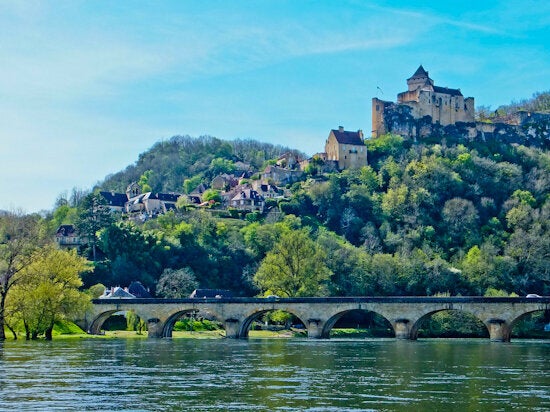
The Dordogne, in South West France, has long been a magnet for British visitors and many have made their home here. It was one of the first areas of France to be discovered, partly because property was so cheap and the weather was better than at home. What this does mean is that English is widely spoken and there's a warm welcome everywhere. If you want to explore the area, you'll need a hire car from the airport at Bergerac but the three main towns are only around 50 kms apart so you won't need to do a lot of driving.
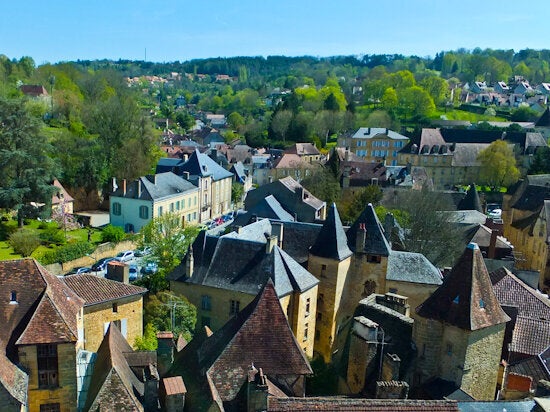
Sarlat makes a good place to start as its medieval and renaissance buildings, with their traditional facades and stone roofs, have all been completely restored. The Panoramic Elevator, a glass lift, inside the bell tower of the former Église Sainte-Marie, whisks you high above the rooftops to give you an overview of the town and you get a potted history of Sarlat as you go up. Right next to it is the covered market whose stalls spill out onto the square, and vendors offer tastings of Foie Gras, cheese, wine and nougat.
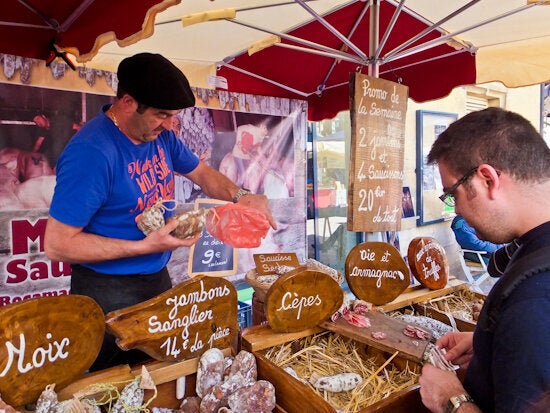
It makes you hungry and you're spoilt for choice with restaurants here. If you want to eat good food, with a great view, then drive to Les Jardins de Marqueyssac, which has a panorama over the Dordogne river with its castles of Fayrac , Beynac and Castelnaud and villages of Roque-Gageac and Domme. The gardens, themselves, were planted with 150,000 boxwoods in the 19th century and imaginative topiary has carved them into rounded shapes resembling green flocks of sheep. Peacocks display their multi-coloured tails here and there are over 6 kms of paths linking belvederes, waterways, and rockeries.
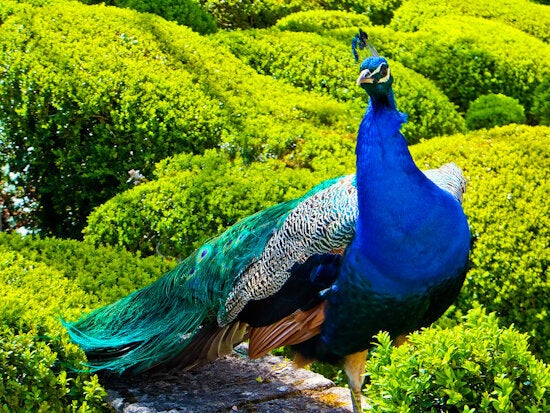
Down below, carved into the cliffs, is the village of La Roque-Gageac and you can take one of Les Gabares Norbert traditional wooden boats on the Dordogne. Dominating the landscape, the medieval castles are even more impressive seen from the water, particularly the Chateau de Castelnaud. Dating from the 13th century, this is the archetypal mediaeval fortress and houses a Museum of Medieval Warfare with one of the world's finest private collections of ancient weaponry. By the walls, outside, sit full size reconstructions of siege machines, and there are regular triggerings of the giant catapult as well as live cannon fire.
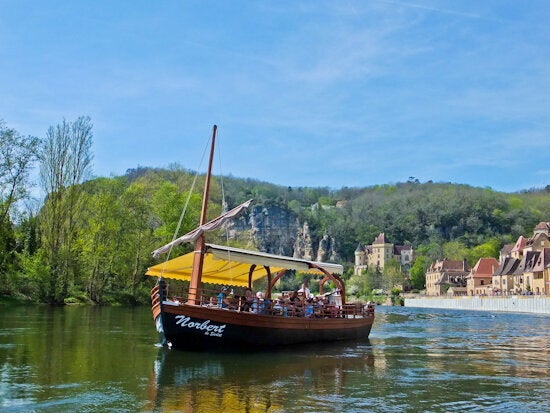
Perigueux, in the North, is the capital of the department and home to the Roman remains of Vesunna with the ruined Tour de Vésone still rising 85 feet in the air. Le Puy St-Front is the name of the medieval quarter and its crown jewel is the 5 white domes and colonnaded turrets of Saint-Front Cathedral. The Way of St James passes through here and it was a major stop for pilgrims as they journeyed to Santiago de Compestala, in Spain
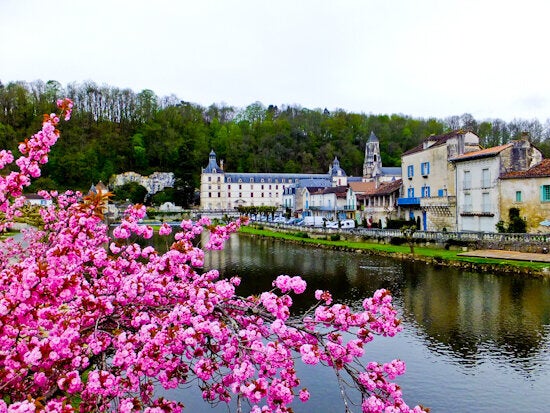
Another holy place on the route is the Abbey of Brantome, known as the Venice of the Perigord because it's encircled by the river Dronne. It was founded in the 8th century by Charlemagne who donated the supposed relics of Saint Sicarius, one of the children massacred by Herod, and grew into a major religious centre. One of the oldest parts is the bell tower which dates from 11th century and is one of the oldest in France. Behind it, at the foot of the cliff, are the caves carved into the rocks, where the monks once lived and there's a spectacular carving of the last judgement.
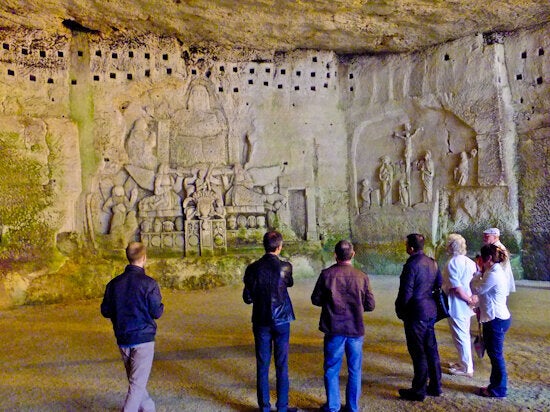
Of course, the great joy in this part of France is the food and drink. Duck is king here, whether smoked or dried and the area is particularly famous for Foie Gras. If that's not to your taste, enjoy Confit de Canard, a long cooked duck leg, or a simple Pate, and other specialities include black truffles, walnuts and strawberries.
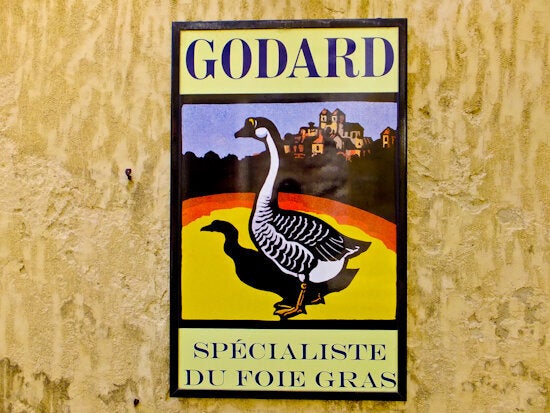
You might not have heard about the wines of the region but at only 50kms from Bordeaux, the Bergerac white is particularly good. An interesting day out is to visit the organic vineyard of Chateau Haut Garrigue where they'll explain their biodynamic techniques. Simply, everything they do is governed by the movements of the moon and other planets and they use homeopathic techniques on the vines. On offer is a delicious lunch, matching their wines with food so you can judge for yourself. They also allow you to blend your own wine and they'll then bottle it and you can take it away.
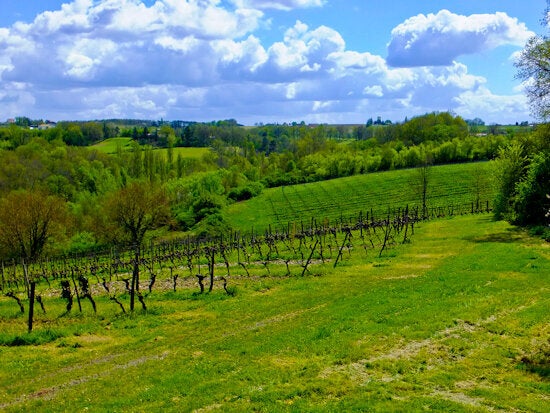
On my last day I visit the medieval village of Eymet, just outside Bergerac. This a Bastide, or "New Town", built in the Middle Ages to house the rural population and protect them in times of war. It's full of half-timbered houses linked by narrow alleys, laid out in a grid pattern round a central square. There's a market here twice a week and, in the summer, the tourist office sends out actors dressed in medieval costumes to waylay unsuspecting visitors. I'm thrust into a smock and floppy hat and they set to me work carving out a fleur-de-lys from stone. Suddenly I'm not just middle aged, I'm transported back to the French Middle Ages.
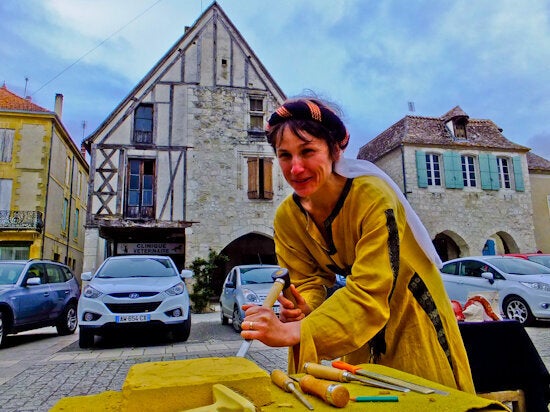
The 4 star Chateau des Vigiers is just 25 minutes from Bergerac Airport and has a 27 hole golf course and spa.
Dordogne-Perigord Tourism has information about the region.
Flybe flies direct to Bergerac from various locations in the UK.
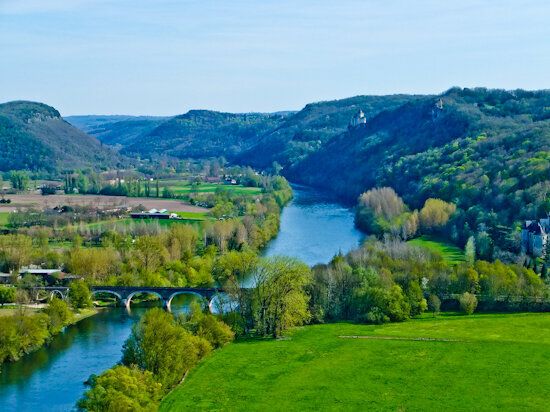
All pictures copyright Rupert Parker